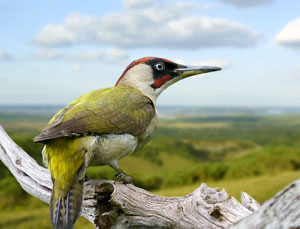The Barn Owl: Guardian of the Night

A stealthy predator who glides through the night with unparalleled grace and accuracy dominates the moonlit British landscapes: the British Barn Owl (Tyto alba). This famous raptor, also known as the “ghost of the countryside,” personifies the mystery and awe of British wildlife. A special place in the hearts of both nature lovers and conservationists is reserved for the barn owl because of its ethereal beauty and crucial function in preserving ecological equilibrium.
Physical Characteristics:
The barn owl can be distinguished from other raptors by its unusual appearance. A ring of dark feathers frames its heart-shaped, pale face, giving it an almost ghostly appearance. It is a master of stealth thanks to its soft, mottled plumage, which provides great camouflage in moonlight.
The barn owl is a medium-sized, slender bird with a wingspan of up to 3 feet (90 cm), making it ideal for nocturnal hunting. It has long, sensitive legs with keen talons for catching prey, and special facial feathers that help it hear acutely enough that it can hear even the slightest rustle of a mouse in the underbrush.
Habitat and Distribution:
There are several different environments where British barn owls can be found, including open farmland, grassy meadows, marshes, and forest margins. They like low-vegetation environments because they offer plenty of opportunities to hunt for their chosen prey, small animals like voles, shrews, and mice. Barn Owls serve as an important indication of ecosystem health due to their capacity to adapt to many environments and their dependence on these prey species.
Life Cycle and Behaviour:
Barn owls build nests in peaceful, undisturbed areas and are monogamous. These might include hollow trees, deteriorated structures, or even nest boxes created to aid in their preservation. A clutch of 4 to 7 eggs is normally laid by females during the breeding season, which starts in March. The eggs hatch into downy white chicks after roughly a month of incubation by the female while the male goes food hunting.
The chicks go through several developmental stages as they mature, losing their down to create their adolescent plumage. Around 9 to 10 weeks old, juveniles start to fledge, or leave the nest. Their parents, who continue to give them food and training, often help them on their hesitant first flights.
Conservation and Challenges:
Although barn owls have long played a key role in British folklore, recent years have seen challenges for the species’ populations. Their population has been damaged by habitat degradation brought on by urbanisation, agricultural expansion, and the reduction of traditional nesting locations. Barn owls are also in danger from pesticide use and secondary poisoning from rodenticides since they can pick up toxins from their prey.
To ensure the survival of these majestic birds, conservation activities are essential, including the supply of nest boxes, habitat restoration, and raising awareness about the role of barn owls in natural pest control. Numerous neighbourhood groups and enthusiasts actively seek to protect barn owl populations and the delicate environments they call home.
The Barn Owl Remains A Symbol of Nature’s Splendor:
The majestic majesty and deep connectivity of the natural world are represented by the British barn owl. This nocturnal predator captures our imagination and serves as a constant reminder of the enormous diversity that exists within the British landscape because to its hauntingly gorgeous look and crucial function in preserving the delicate web of life. The barn owl represents all that is wild and amazing in our surroundings as we continue to work towards living in harmony with nature.




